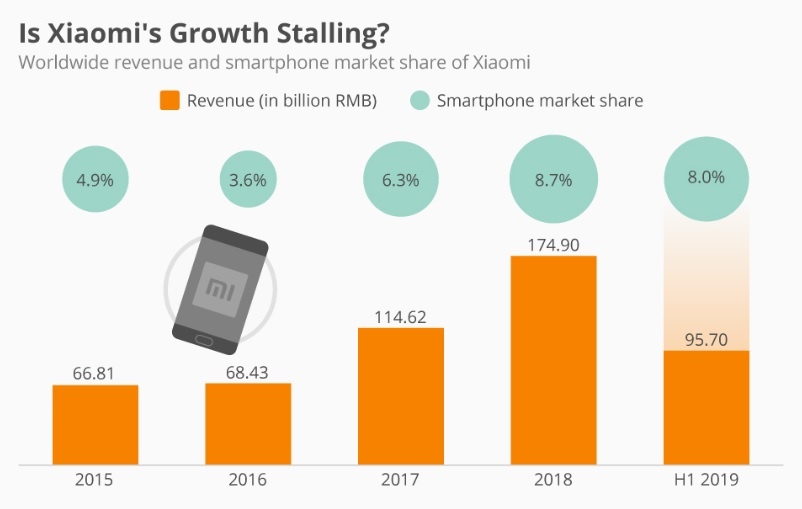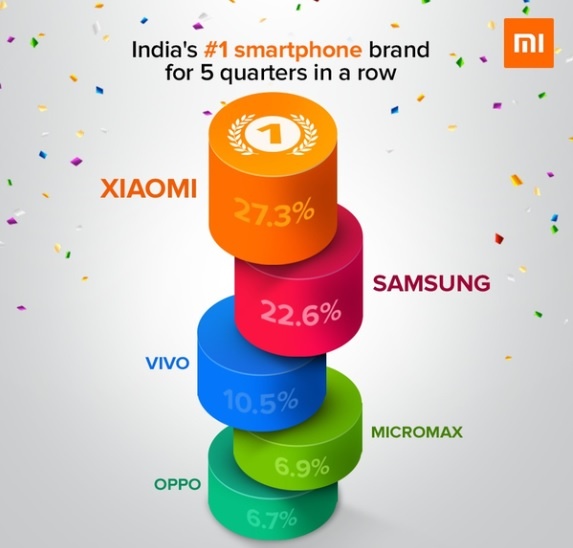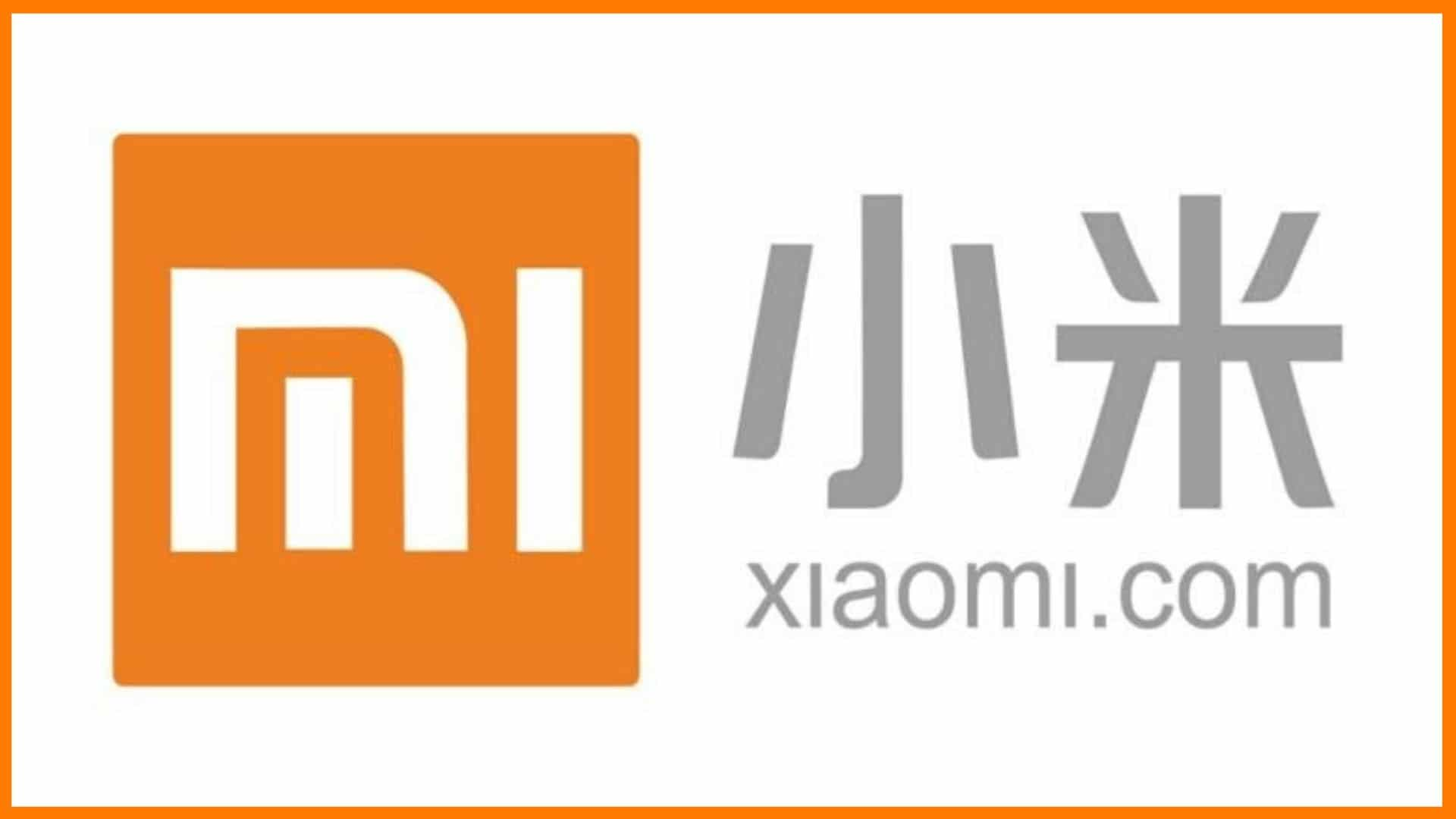Xiaomi Corporation may be a Chinese gadget organization, established by Lei Jun in 2010 and headquartered in Beijing. Xiaomi makes and puts resources into cell phones, versatile applications, trimmers, headphones, MI Television, and various other products. Ranked 468th, Xiaomi is the most youthful organization on Fortune Global 500 List for 2019.
Xiaomi launched its first telephone in August 2011 and quickly picked up a bit of the general industry in China to show it into the nation’s biggest telephone organization in 2014. At the start of the second quarter of 2018, Xiaomi was the world’s fourth-biggest telephone manufacturer, driving in both the most important market, China, and therefore the second-biggest market, India. Xiaomi later built up a more extensive scope of purchaser hardware, including an excellent home (IoT) gadget ecosystem.
Xiaomi has 15,000 employees in China, India, Malaysia, Singapore, and is extending to different nations including Indonesia, the Philippines, and South Africa. consistent with Forbes magazine, Lei Jun, the organizer, and CEO have expected total assets of $12.5 billion. he’s China’s eleventh most extravagant individual and 118th within the world. Xiaomi is that the world’s fourth most vital innovation stirred up within the wake of getting $1.1 billion subsidizing from financial specialists, making Xiaomi’s valuation quite $46 billion.
History And Origin Of Xiaomi Corporation

This company was established in April 2010 by Lei June. MIUI, the ROM which the group made, became an immense achievement and has been ported to numerous gadgets. Starting in 2014 MIUI is often downloaded and introduced to quite 200 gadgets in both English and Chinese, even nonengineers can without much of a stretch introduce MIUI, utilizing the MIUI Express APK. As of the finish of 2013, Xiaomi had quite 30 million MIUI clients around the world, Impressive for such a youthful organization.
The MIUI ROM as compared to Apple’s iOS for being anything but difficult to utilize while giving modern administrations, for instance, cloud reinforcement, simple to utilize music player, and their application store. The group at Xiaomi has always needed clients to feel some portion of the organization and joyfully combat fan criticism using numerous channels and update the ROM each Friday with bug fixes, improvement, and additional highlights.
In 2011 Xiaomi reported the Mi One telephone. Xiaomi was currently making its very own product, yet it’s extremely own equipment also. The Mi One was a top-spec telephone with an unprecedented value path comparatively radical, this has remained Xiaomi’s way of thinking from the very arithmetic mean. While commentators rush to call the Beijing based organization “The Apple of China”, Xiaomi likes to contrast themselves with Amazon, they create ground-breaking equipment that they sell at cost and depend upon their administrations and substance to form up the greater a part of the income.

Talking about their income for 2013 alone over $5 billion is very noteworthy for an additional organization. There are similarities among Xiaomi and Apple, in any case, they’re both equipment and programming organizations, both have solid power over stock chains and both have a hot fan base. Apart from this, the 2 organizations don’t share much else practically speaking, Apple values their cell phones at unbelievable costs and doesn’t combat tons of client input whereas Xiaomi does the inverse.
In 2012 Xiaomi dispatched a sum of seven .2m cell phones and in 2013 Xiaomi delivered a sum of 18.7m cell phones and even transported quite Apple in one quarter. within the principal quarter of 2014, Xiaomi had just sent over 11m cell phones, quite they sold within the aggregate of 2012 and easily over an outsized portion of the 2013 deals numbers. The request keeps on expanding due to the high detail equipment of their gadgets and therefore the value they sell their items at Universal markets, for instance, Hong Kong, Taiwan, and Singapore where Xiaomi are additionally authoritatively available to possess seen comparative interest to China.
This may, within the end, cause a politician European and US dispatch however nothing is affirmed at now. What’s more, people who need Xiaomi telephones (and many do) are happy to pay the cash to import the world’s best telephone.
Business Strategy Of Xiaomi Corporation

Xiaomi can flaunt some wonderful achievements in simply its third entire year as a tool creator. The Chinese startup is on track to sell 60 million cell phones this year, and it’s ensured footed (if rather moderate) strides into various markets in Asia, for instance, Indonesia and India. The organization’s development is increasingly amazing once you perceive how it accomplishes such huge numbers of things uniquely, in contrast, to progressively settled telephone brands.
An ongoing social marking report on Xiaomi created by Resonance China dissects a huge assortment of the startup’s procedures and shows how they’re understanding pleasantly. The excellence of those is that Xiaomi can trade all of them to its new markets – even into testing developing countries crosswise over Southeast Asia or, within the end, Latin America.
The business strategies are compartmentalized below,
Xiaomi Is Fundamentally A Web-Based business

Sequential business visionary and Xiaomi prime supporter Lei Jun likes to state that his most up so far startup may be a web-based business – which is one among the various reasons he loathes the successive examinations among Xiaomi and Apple. He feels that comparing it to Amazon is nearer to the imprint. Xiaomi has its e-store and features a customer-facing facade on Alibaba’s Tmall. The numbers copy Lei Jun’s case.
Xiaomi’s site is the third biggest business-to-customer (B2C) internet business store in China as far as deals volume (behind Tmall and nearest rival JD). On China’s Singles Day on Veterans’ Day, a business bonanza that saw $9.3 billion spent on Tmall, Xiaomi was the highest brand on Alibaba’s commercial center. 1.2 million telephones Xiaomi sold during the 24-hour deals occasion, RMB 1.56 billion ($254 million) in things sold.
Xiaomi by and enormous just sell its gadgets in constrained glimmer deals – ordinarily in clusters of around 50,000 to 100,000 in China, yet littler sums abroad – to ensure it just fabricates what it’s bound to sell. The upstart organization’s plan to close the deal doesn’t stop once somebody has purchased a telephone.
Landing Page Is An Estore

Most device brands utilize their landing pages as showrooms or celebrated online adverts. Xiaomi, in any case, gets to the purpose by making its home on the online into an unadulterated web-based business store. Xiaomi’s web home updates day by day to place an accentuation on which items are next accessible in its progressing streak deals.
Tmall is China’s greatest image arranged online commercial center, with an enormous number of merchants, as an example, Uniqlo, Costco, and Burberry. that creates Xiaomi’s site design recognizable to a large number of consumers on Tmall and other mainstream online business locales in China, with the standard tabs to modify between pictures, details, and purchasers’ audits and appraisals. Apple’s site isolates all that stuff into the Apple Online Store, yet for Xiaomi, it’s upfront.
Utilizes Another kind of Social Trade

Since Xiaomi generally sells its telephones online, online networking is critical mostly it stays obvious and draws in with the 2 clients and planned purchasers. It does this in China, for the foremost part, using Weibo, and in new markets, it’s creation utilization of Facebook, Twitter, and – principally through Hugo Barra, ex-Googler turned Xiaomi VP for worldwide activities – Google+.
On Weibo, Xiaomi regularly observes commitment levels well quite 60%, as per the Resonance China report, on account of incessant everyday posts on a tremendous assortment of themes. Not exclusively is there the quality buzz for items and news about glimmer deals, yet also motivating forces for retweets, how-to aides, and fun things like photograph challenges. Xiaomi’s Weibo will likewise retweet some popular substance circumventing China’s web since it’s significant to its crowd and type of bonds into social issues around contraptions and innovation.
Each Item Range features a Social Center

Another amazing piece of Xiaomi’s online life system is that it runs Weibo representing each item go. Xiaomi has 10 primary Weibo accounts, the foremost prominent of which is that the Xiaomi Mobile Weibo with near 11 million fans; the freshest one, for the MiPad (presented above), has quite recently outperformed 500,000 adherents. Xiaomi’s corporate Weibo has 4,000,000 adherents, demonstrating that individuals would like to speak online with contraptions (as it were) as against a corporation.
Devices are extremely on the brink of home, yet organizations will, generally, be somewhat anonymous, so this bodes well from a person’s point of view – yet it’s something that so few organizations do, especially outside of China. This permits the organization to cross-advance Weibo posts between records. Lei Jun has quite 11 million supporters, while Lin Bin has quite 4,000,000.
Makes Shortage

Xiaomi’s glimmer deals help it get control over stock and lessen wastage, staying far away from the type of over-creation calamities seen as lately with Amazon’s Fire Phone and Microsoft’s Surface RT.
While that creates it harder to urge a Xiaomi device, the organization has found out the way to turn that into a positive, making occasional promotion as glimmer offers of a predetermined number of gadgets open up hebdomadally. Xiaomi’s online life accounts, especially on Weibo and WeChat, assume a key job in driving individuals to the enrollment page for every new blaze deal. At that time, when a glimmer deal is finished, Xiaomi utilizes the fast sell-out in further online networking postings, proclaiming that, for instance, 50,000 Mi4 cell phones sold call at only 25 seconds. Not every one invites streak deals. The procedure is certainly far more mind-boggling than the standard snap and checkout on most online business locales.
The framework appears to possess more analysis outside of China than it’s in Xiaomi’s home country. When Xiaomi propelled in India in September, it confronted a reaction as interest exceeded supply by an element of two-to-one, bringing a few rushes of baffled and disappointed remarks on the brand’s Facebook India page.
Brings Down the value Of “Premium”
For Apple, premium beginnings at about $700. For Samsung, it’s about $600. However, Xiaomi slashed that down the center in 2011 when it appeared the primary of its cell phones, which pressed premium specs (yet an easy, blocky structure) into a touch value – just $325. Xiaomi has additionally increased its equipment configuration game with the goal that the texture of the phone itself isn’t again an over the highest trade-off contrasted with models from Apple and HTC.
Xiaomi first accentuates its low cost preceding making a plunge profundity into its lead item’s significant level of incorporated innovation and equipment execution. This blend of minimal effort and high worth maybe a solid message to Chinese shoppers. Enlivened by Apple, Xiaomi likewise instructs purchasers on its plan reasoning, underscoring attention on straightforwardness and usefulness in its items. Xiaomi’s very own rendition of Android, called MIUI, has additionally assisted with this superior feel as it’s preferred to research most Android skins out there.
Runs Its Locale
Alongside its cautious online networking stratagem, Xiaomi is likewise starring dynamic in running its locale gatherings, or BBS. This is often the place the brand’s most bad-to-the-bone fans, named “Mi fans,” meet to look at devices, share information, and by an enormous hang around. This is often something regular to Chinese organizations, yet to an excellent extent unused by significant brands abroad. Xiaomi’s BBS has 30 million enrolled clients and sees 579,000 new posts day by day.
How Does Xiaomi Prosper And Earn More Revenue
Q2’18 saw an increase of around 152% hop in its abroad income which is estimated at about Rs 16,700 crores. While around 90% of its items which incorporate cell phones and other equipment items bring it a net advantage of around 5%. the web Services, but, help Xiaomi get a net advantage of around 60%. At the purpose when it initially began its tasks in India, Xiaomi profoundly relied upon informal publicizing to spare any quite overhead cost.
This enabled the Chinese monster to sell its items particularly cell phones at a lower cost than its rivals which thus helped the organization to tug in clients. More procurement implies more clients utilizing Xiaomi gadgets. Presently some level of those clients will, generally, become faithful to administrations just like the MIUI, its music administration, Mi Store, and so on. This is often actually what Xiaomi has needed as far back because it began making items. Selling the simplest of kit at a lower cost with a target of procuring some dedicated clients of its internet providers within the plan of action of Xiaomi.
In any case, things weren’t that straightforward for the Chinese telephone maker and Internet Company. After an underlying lift to its telephone deals, Xiaomi went down in positioning shortly after players like Oppo, Vivo, and Huawei (with Honor) overwhelmed the financial limit telephone showcase through disconnected streams. Although Xiaomi was the pioneer within the online space, individuals still used to favor purchasing cell phones disconnected.
Therefore, Xiaomi began to grow its disconnected nearness by opening Mi Home stores and joining forces with neighborhood merchants. Opening Mi Home Stores completed two things – 1) Xiaomi had the choice to sell more telephones. 2) People visiting the Mi Home Stores would regularly finish up purchasing different extras like Power Banks, Earphones, then forth fabricated by Xiaomi.
Business Growth Of Xiaomi Corporation
The Chinese have a fixation on establishing world precedents. So when Xiaomi propelled 500 disconnected stores in India in one enter October, it got a special universe record to its name. For a brand that has depended for the foremost part on blaze deals web-based, going huge disconnected along these lines was unique. In any case, at that time, the Indian market is likewise unique and there is much in question here for Xiaomi. Internationally, telephone shipments declined 4.1% within the half-moon of 2018, topping off the “most noticeably awful year ever” for telephone shipments, industry tracker IDC said a month ago. Be that because it may, India hasn’t seen any stoppage.
It is one of only a couple of high-development showcases on the earth at this moment. In 2018, almost 142.3 million cell phones were dispatched in India. that suggests the event of 14.5% over the sooner year. Among the telephone marks that sell in India, Xiaomi has become the quickest with a 58.6% year-on-year increment in unit deals in 2018 to corner a bit of the general industry of 28.9%, as indicated by IDC. it’s been within the marketplace for just four years currently however has beat Samsung, which features a piece of the general industry of twenty-two .4%. India represents quite 33% of Xiaomi’s telephone deals all around.
In 2018, Xiaomi India booked an income of Rs 23,000 crore ($3.24 billion), a 174% development over the sooner year, selling telephones valued at a traditional of $142.53. Samsung’s telephone business in India rounded up about Rs 37,349 crore ($4.82 billion) during a similar period, up 9% from the prior year. The South Korean organization’s telephones are valued higher, all things considered upwards of $250.
In 2016, Xiaomi propelled the RedMi Note 3 and therefore the RedMi 3S — both selling great above desires and helping the organization dig the offers of Indian makers, for instance, Micromax and Lava. In 2017, when it resembled the web telephone market had hit a roof of around 100 million customers, Xiaomi began selling disconnected. Before the year’s over, 25% of the organization’s deals were from disconnected channels crosswise over twelve Indian urban areas. Here, once more, Xiaomi went straightforwardly to the retailer, removing the merchants within the middle.
It presently sells disconnected in additional than 40 urban communities and has quite 4,000 favored accomplices who sell Xiaomi telephones. It likewise propelled enormous organization retailers that year with Sangeeta, Poorvika, Croma, and Reliance Digital.
On the off chance that one thing’s worked for Xiaomi, it’s the organization’s evaluating procedure. Xiaomi author Lei Jun broadly said a year ago that the organization could never make over 5% edges from its equipment portfolio, adjusting the organization to its vision of going past being an equipment creator. “India is extremely value touchy and almost (every) client survey of the Xiaomi telephone will say that it’s useful at the value,” says Vijay Raj, a Bengaluru-based blogger, and analyst.
It’s not making modest telephones. There’s likewise something exceptionally shrewd affecting everything here. As this Harvard Business review brings up, Xiaomi keeps its models within the marketplace for longer than other telephone producers. A half-year prior, it posted a $2.1 billion benefit for its half-moon of business as a trader on an open market organization.
According to one gauge, Xiaomi’s MIUI has around 70 million month to month dynamic clients. that creates it a ground-breaking conveyance stage. “They would wish to research what we will do to form extra dollars for it,” says Kawoosa of TechArt. Xiaomi is making Rs 40-45 for every client for every month, he says. MIUI was one among the soonest telephone working frameworks to assist the use of locally available infrared blasters to regulate the apparatus’s reception. It additionally presented clever highlights that make it simpler for clients to duplicate one-time passwords for online exchanges and for organizing train booking affirmation messages to conspicuously show the PNR number.
Xiaomi likewise lets clients arrange two WhatsApp numbers on an identical telephone to drive a faithful client base. Xiaomi, generally speaking, has an appointment of quite 200 items — extending from a pen to a cleanser gadget to consoles and PCs — that it’s created through its “biological system accomplices.” Most of those aren’t sold in India yet. The organization must get however many brilliant gadgets as could reasonably be expected associated through a typical Internet of Things stage it calls the Mi Home application. the first classes in India are presently telephones, TVs, control banks, sound, wearables, and air purifiers. In September, Xiaomi propelled a home surveillance camera.
Future Plans Of Xiaomi
During his visit to India, Xiaomi’s Founder and CEO Lei Jun discussed the organization’s arrangements for India, techniques, targets, and a couple of indications on the up and coming product offering. Here is that the thing that he stated,
Plans To Expand Disconnected Piece Of The Pie
“If we see an enormous market online, maybe a little piece… so it’s somewhat reliant on what number of people embrace the web. In China, after we’ve accomplished such a scale (in the web market), the test is how we will accomplish the equivalent in disconnected effectiveness. In India, after we accomplished over half a piece of the pie in online space, the inquiry is the way to do likewise in disconnected,” Jun said. More at ET. Note that the organization had begun extending its disconnected conveyance channel since July a year ago to around 5000 disconnected outlets crosswise over India.
New Assembling Plant
Xiaomi has lately enlisted a subsequent assembling plant in Andhra Pradesh and guaranteed that now over 95% of its telephones within the Indian market would be produced locally. As indicated by this ET report, the organization may even take a gander at sending out Indian produced telephones afterward. The telephone producer has lately guaranteed that it’s crossed $1 billion in income from its India tasks. Xiaomi makes cash by selling telephones, wearables, frill, air purifiers, and so on. In Q4 2016, Xiaomi was the second biggest merchant in India as far as telephone shipments, as indicated by IDC. The organization’s Mi Band shipments additionally represented 10.3% of an enormous Indian wearable market in Q2 2016.
More Stockrooms And Administration Focuses
The organization is additionally fixing a 3rd distribution center in Delhi NCR and plans to twofold its administration’s focus check from 250 to 500 by the principal half this current year. Note that Xiaomi has its web-based business store named mi.com in India; In July 2015, Xiaomi declared that it might put resources into fixing a claim distribution center and coordinations also.
Plans To Enter the cash, Related Division
Jun likewise disclosed to The Hindu that the organization will dispatch another arrangement of things, albeit he didn’t uncover what kind of items they might be. Jun additionally implied that the organization is keen on venturing into the money related segment in India: “We are investigating the probability of giving budgetary administrations in India. Be that because it may, this part is exceptionally managed. It requires various licenses. If we could get such licenses, we are glad to be a bit of this monetary administration’s development in India.
We have to grasp if there are confinements on remote substances.” Xiaomi additionally has an installment administration called Mi Pay yet is simply accessible in China at this moment and has engaged with the Bank of China and Union Pay, a card arrangement in China.





